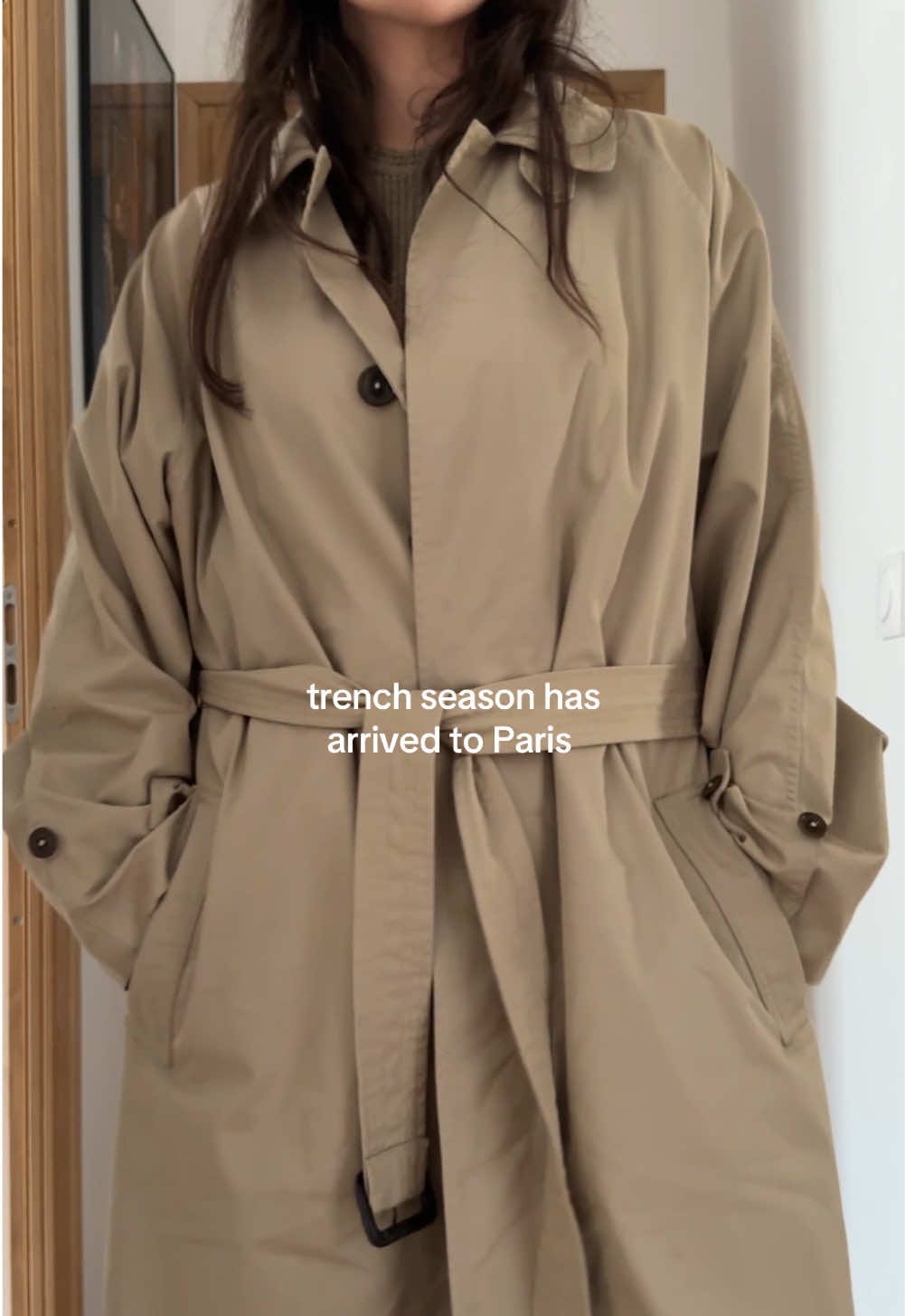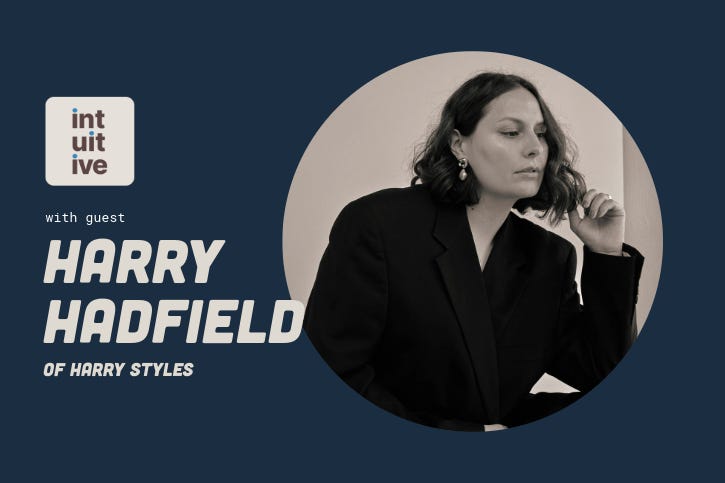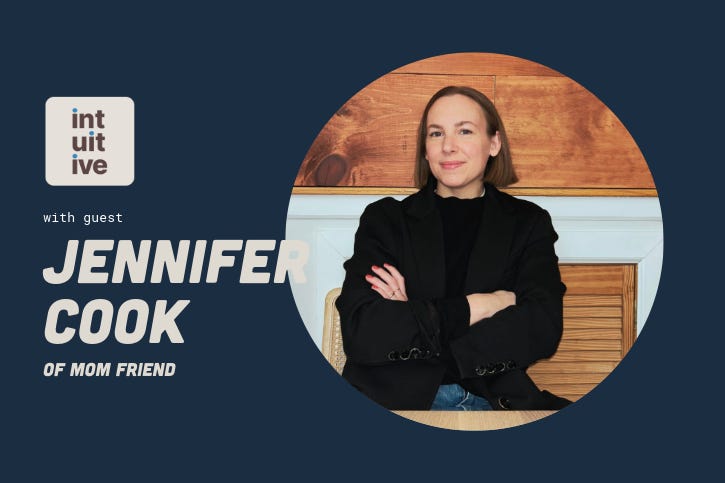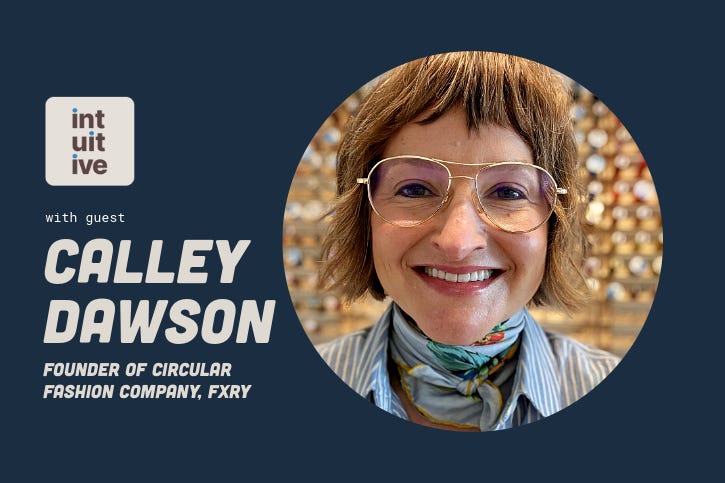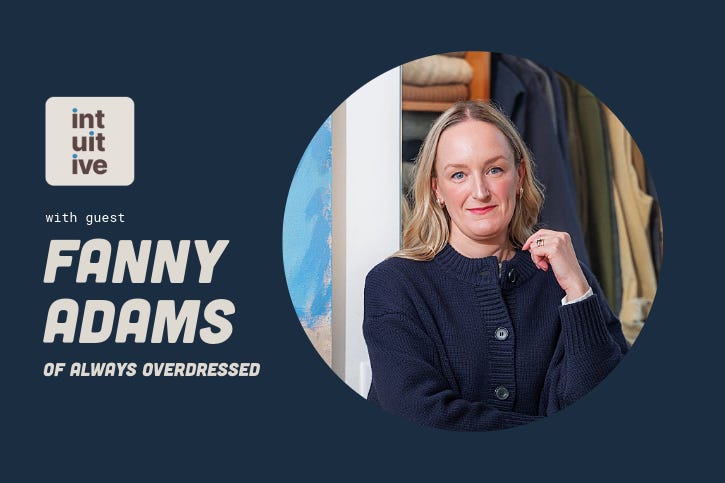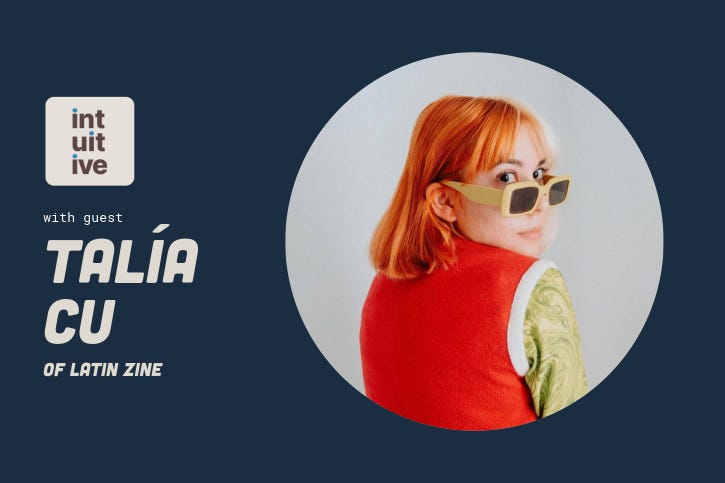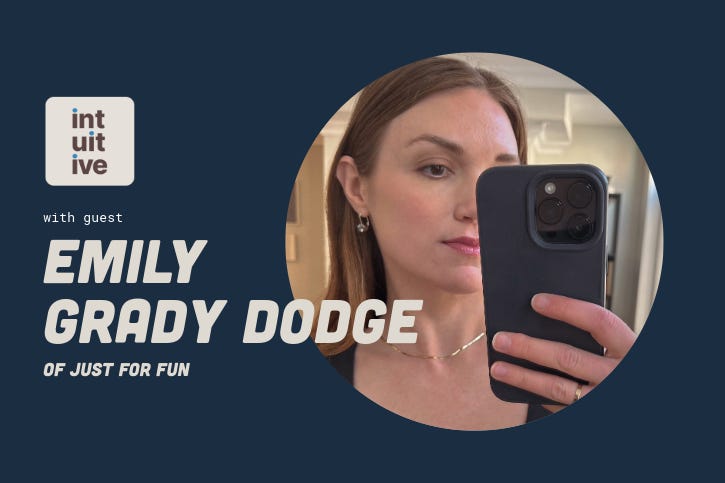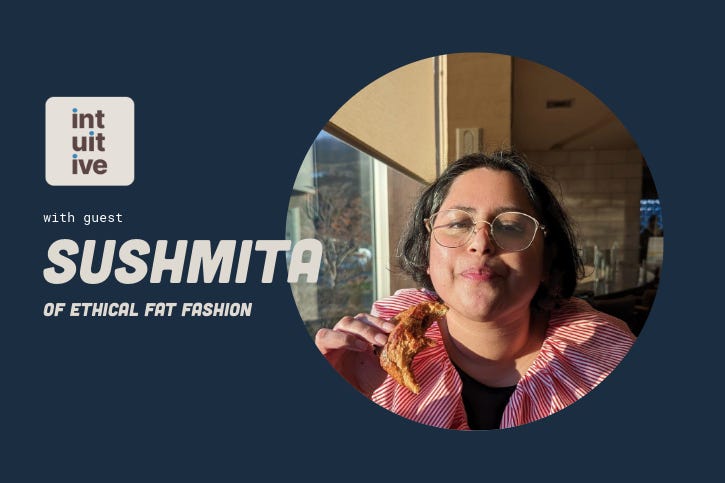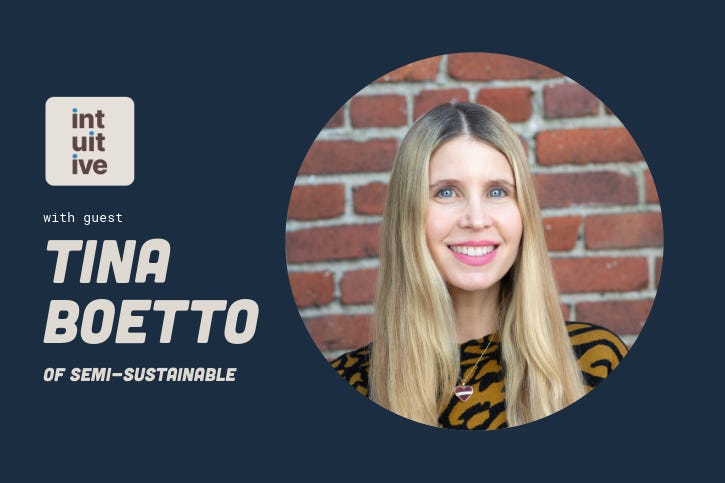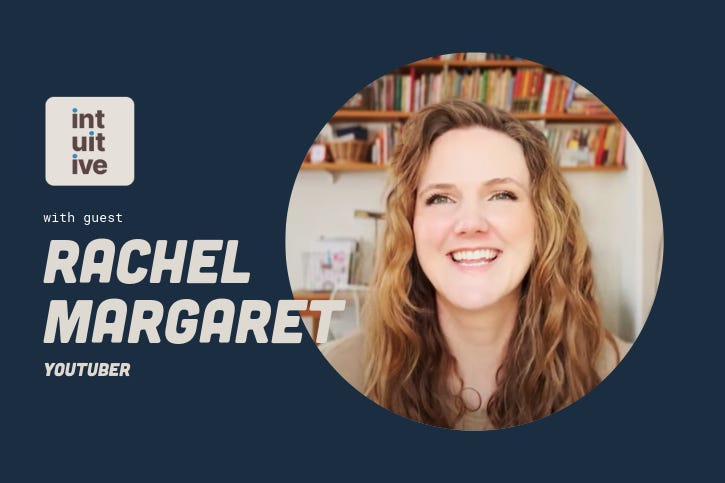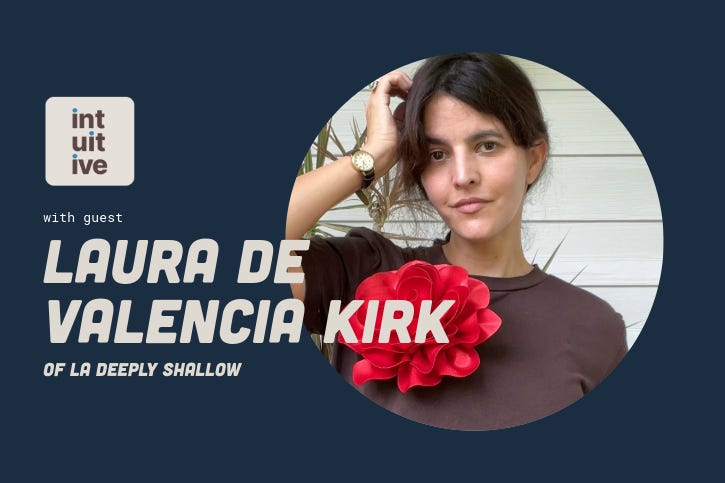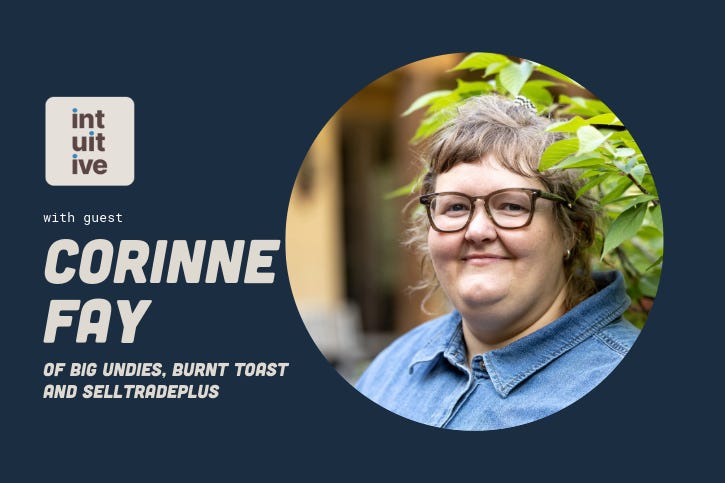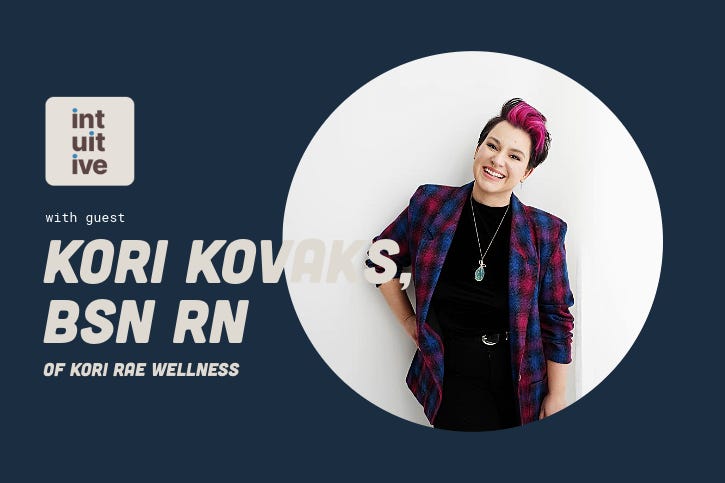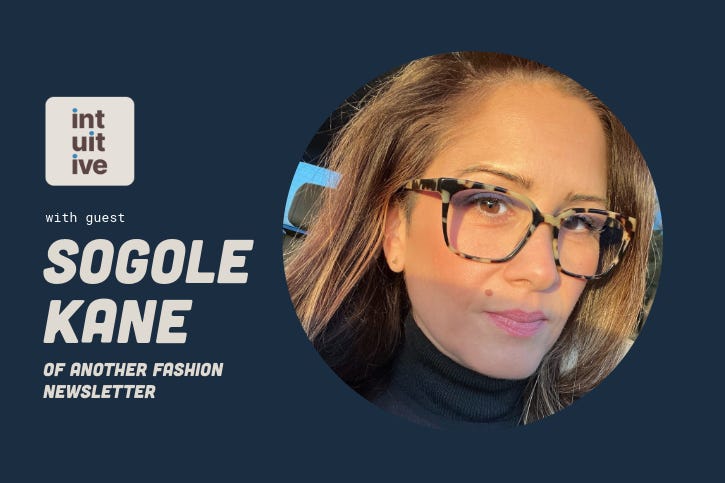Episode 23. How color helped me reclaim confidence, with Lee Alisha
Description
This week, Lee Alisha of Wearing on My Mind joins to share about her experience returning to self-confidence after loss and the role of bright color in showing her transformation! We also celebrate Lee’s recent completion of an MFA, discuss why writing on Substack is a breath of fresh, and how she decides what to buy and wear.
Enjoy!
Episode Transcript
This transcript has been edited for clarity.
Welcome
You’re listening to Intuitive Style, where we believe that everyone has style. I’m Maureen McLennon Welton. In conversation with fantastic guests, we explore how to tap into our style intuition so that we can dress authentically and live fully.
Maureen: Today’s guest bounded onto my Substack feed with joy, enthusiasm, and bright color. While she might be slightly newer to our Substack feeds, she’s been making style and beauty content on Instagram for a minute, which is equally as delightful as her writing style. Lee, welcome to the show.
Lee: Thank you so much. Thank you for that introduction. It’s so sweet.
Maureen: I love seeing a new creator come on to Substack and just have such a clear perspective, POV, and you certainly accomplished that.
Lee: Thank you.
Maureen: So with that, my first introduction to you was a post about your experience wearing vibrant colors over the summer and how that improved your self-esteem. For anyone who hasn’t read that newsletter yet, what changed and encouraged you to start showing up in that way?
Lee: So I was actually maybe like a month and a half ago just looking through my camera roll and I noticed that most of my summer outfits—anytime I took a photo—it was some vibrant color or print. And I was like, I need to write about this because I didn’t realize how happy it was making me and how comfortable I felt in all those vibrant colors and everything.
A few years ago, right when COVID happened, I was a junior in college. All my classes were online. I was isolated. I was grieving the loss of a loved one. So I was not connected to myself at all—you know, a lot of people weren’t during that time.
And I started to not express myself anymore through the clothes that I was wearing. Prior to COVID and all that, I felt pretty confident in my skin and what I was wearing. My style has changed so much since then, but when COVID hit, I just started to hide myself. I hid my body. I was wearing more darker colors—nothing like the prints that I did this summer at all.
And so, yeah, when I saw all the photos of myself from this summer, I wanted to write about it because it honestly surprised me that I wasn’t realizing that that self-confidence came back. And it reminded me of when we’re kids and we don’t care what anyone thinks and we’ll just wear whatever we want to wear. So, yeah.
Maureen: Beautiful to hear that we can go through a period of kind of darkness and sadness and hiding, and sometimes we are lucky in the way that we can just find joy again without necessarily having to be super intentional about it. Sometimes it can just surprise us. And in that way, grief is non-linear and it’s surprising in all these ways.
Were you shopping differently, or was it more just like you’d had these clothes beforehand and were just choosing to wear darker colors versus now choosing to wear bright colors? How was that materially different?
Lee: That’s a good question. Some of the pieces I had, but a lot of them are new. I’ve been fortunate to work with some brands that have gifted me some items, so that has kind of propelled me out of my comfort zone—just working with different women-owned, small-owned brands.
But personally, I don’t really know what it was. I just started to embrace things that maybe would have made me uncomfortable in the past, especially because I live in Florida. We had a very hot summer, and I was like, I can’t do the oversized dark shirt and leggings every day—I need to cool off. So I started to wear a lot more linen, and some of the linen pieces that I bought had prints or patterns and colors—it wasn’t just tan or white.
So, you know, just making sure that I felt comfortable in extreme heat and also wanting to look cute in my own sense of style and everything.
Maureen: I love that too, and this is one of the reasons that I have a podcast about this. Because I think sometimes it can feel like there’s only one way to do things.
And I’m highly analytical—so when I’m shopping for my closet, nine times out of ten, it’s with extreme precision and intention and I overthink it. And I think what I’m hearing from what you’re saying is it was a little bit more organic and you were just kind of drawn toward these bright colors compared to when you were drawn toward darker colors.
Am I oversimplifying that process, or was there more analytical decision-making behind that? Which, for the record, if it is very organic, I’m jealous.
Lee: Right? Well, I’d say if I’m just shopping for everyday basics—like things that I can wear with five different outfits and remix—I may be a bit more analytical about that because I want to make sure it’ll last and I can get a lot of usage out of it.
But, you know Like in that newsletter, I had this green caftan on. When I got that, I wasn’t like, “Yeah, I’m gonna wear this every single day.” You know what I mean? I was like, I know this is probably gonna be a piece that sits in the closet, but it makes me happy and I will wear it. But it’s not gonna be like an everyday item, you know?
So I think the analytical, almost logical clothes-eye kind of goes out the window for me if it’s something I really, really like that may not be something I wear every day.
Maureen: It’s awesome to give yourself permission to do that. That’s how we interject things that we didn’t even know that we wanted. Sometimes we’re just drawn to something like a moth to a flame.
You also mentioned in the post there was a specific outfit that you wouldn’t have worn a few years ago. I think it was a little bit preppier or something like that. And I was just wondering—can you share more about maybe what changed your mind or how that change occurred, basically?
Lee: I remember the dress you were talking about. I think it was the one where I didn’t have sleeves, and it had stripes. Yeah, so that was one of those linen pieces I was telling you about. I felt really cool in it, I didn’t get hot in that dress—it was a very comfortable piece of clothing.
But a few years ago, I wouldn’t have worn it. Not because of the print or the color, but literally because of the arms—it didn’t have sleeves at all. And, you know, during COVID and isolation, I started to feel very aware of my body, but then also pick up little things that now I can look back and be like, I was being way too hard on myself.
Like, I’m blessed to have this body and to be able, you know what I mean? But back then, I was just looking at my body and picking all these little things apart. And back then, I just did not like my arms out. I needed sleeves. I just wanted to be covered, you know?
“I’m blessed to have this body” - Lee Alisha
And so that piece—I love that dress so much today. I don’t have a second thought about my arms or anything. But like I said, that didn’t happen overnight, you know? Because I felt those insecurities like four or five years ago, and now it’s 2025, and I still have my moments and stuff. It’s not perfect, you know, but I just try to show up for myself and not be hard on myself, especially when it comes to what I’m putting on my body and how I feel, you know?
Maureen: I know that you said you were grieving the loss of a loved one around that time, but it’s just crazy the way that COVID had such an impact on how we were all feeling.
I also look back at pictures from a couple of years ago, and at the time I would look at those pictures and be horrified by my appearance. And it was just—like—totally normal. My body was so normal. And I just had this horrible lens on it.
And now I look back at those pictures and I [see something really positive]. I see such a different version of myself. And for me, I would say partially that just comes with getting used to maybe looking different if your body’s changed.
But also, I think there’s really something to what you’re saying about maybe it was just the COVID of it all — and how much time we had to just sit on our phones. I don’t know. Do you feel like that’s part of it?
Lee: I mean, I kind of do, because I remember early days it was like, “Don’t go outside.” So it’s like, okay, well, I’m just going to sit inside. And sitting inside just became my normal, because like I said, all my classes were online. My classes continued to be remote until I graduated in 2022.
So I was not on campus for almost a year and a half, almost two years. I just got comfortable with the four walls of my apartment—and I was like, it’s fine, it’s great, you know? That just became normal. Then, when it was time to go outside and see your friends and loved ones, that felt strange. You kind of want to hide yourself or just stay where you feel safe, you know?
Maureen: I totally relate to that. I think that’s so fair. I mean, e

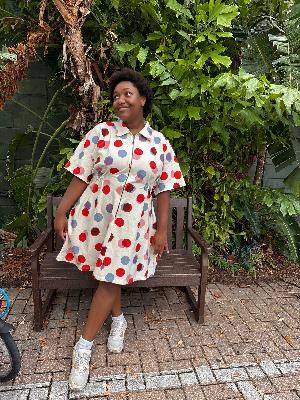
![Episode 24. Rambling in [Intuitive] Style, with Traci Landy Episode 24. Rambling in [Intuitive] Style, with Traci Landy](https://substackcdn.com/feed/podcast/2669400/post/177614968/9bbc5a3f73fab5e46b0a064fb5bff6b4.jpg)
